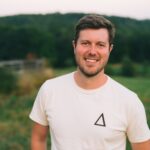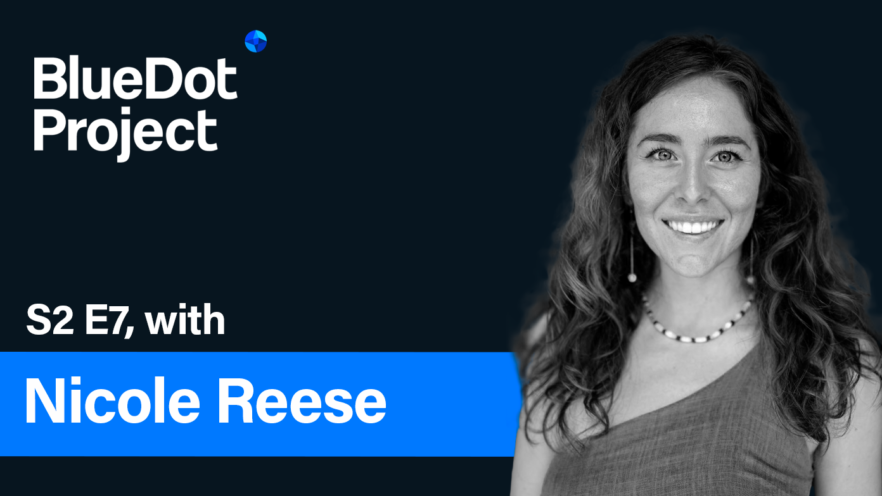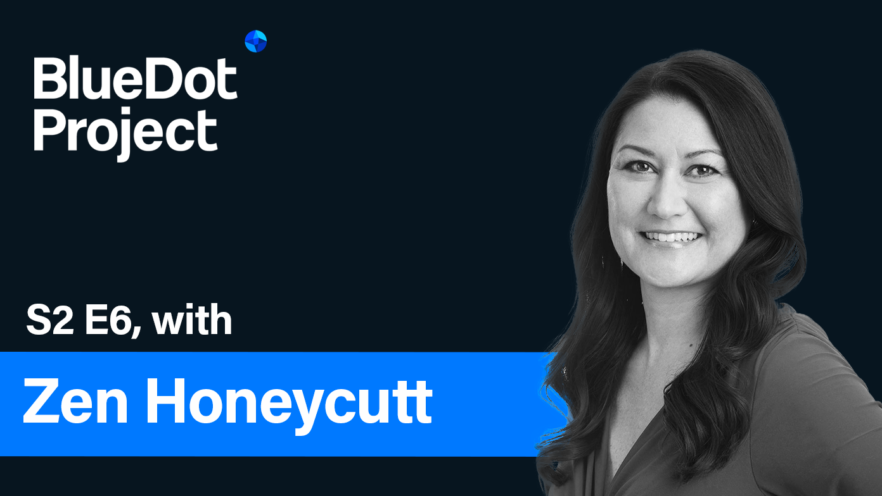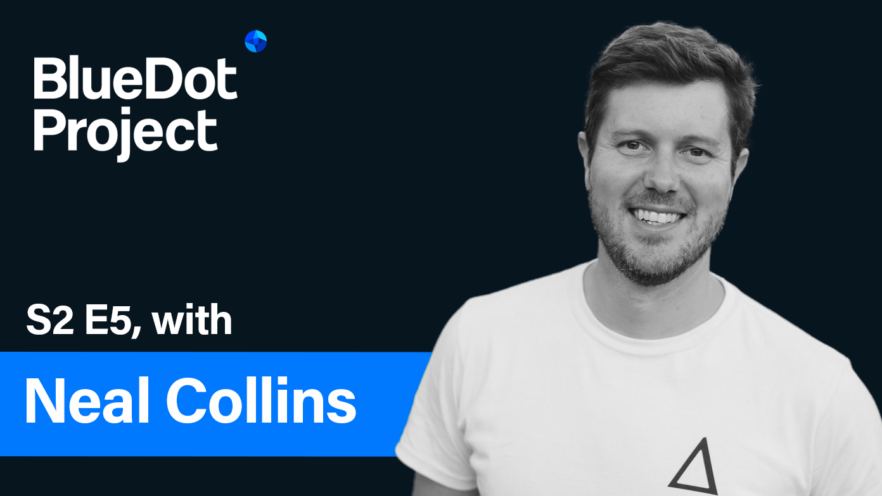
Regenerative Real Estate: What It Is, How It’s Different, and Why the World Needs It
What is regenerative real estate development, and how is it different from conventional development? Investors who seek to fund regenerative projects should understand this emerging field because it’s so important to reducing financial risk and achieving expected returns.
In this episode of the Blue Dot Project Podcast, guest Neal Collins talks about regenerative real estate development with host David Vranicar.
For impact investors, we explore how regenerative real estate development differs from conventional processes in five key areas: community involvement in the planning process, the focus on long-term success, the goal of regenerating nature rather than just protecting it, and the challenges and opportunities of working with a variety of funding sources.
Mentioned in this episode:
Neal is co-founder of Latitude Regenerative Real Estate, a company based in the U.S. state of Washington. He also hosts the Regenerative Real Estate Podcast, where twice a month for four years he has interviewed dozens of people with diverse knowledge and experience in creating sustainable, thriving communities.
In the past two years, Latitude has transitioned away from being a transactional real estate brokerage and services company. Today they are among a small number of regenerative real estate development companies at the forefront of this fast-changing field. Latitude has agents and partners across North America.
Transcript
Top00:00:05:00 – 00:00:18:23
David Vranicar
Welcome to the Blue Dot Project podcast for Impact Investors. We share ideas for building regenerative cultures and communities that enable life to thrive on Earth for thousands of years.
00:00:19:01 – 00:00:49:06
David Vranicar
Regenerative real estate development is an emerging field that provides deep emotional rewards for both practitioners and investors. Regenerative development is a key element for building successful regenerative communities. For impact investors, it’s important to understand the key differences between regenerative and conventional development, because the two processes work quite differently. Today, we talk with Neal Collins, co-founder of Latitude Regenerative Real Estate and agency and developer in the U.S. state of Washington.
00:00:49:09 – 00:01:14:09
David Vranicar
Neal is also host of the Regenerative Real Estate Podcast, which recently published its hundredth episode. After running for about four years. Neal knows a lot about this emerging field of regenerative real estate because he’s interviewed dozens of people who are helping to define and grow it. For the past few years, Neal’s company has also been a pioneer in regenerative real estate development, and they’re elbow-deep on several innovative projects in the U.S. Pacific Northwest region.
00:01:14:11 – 00:01:27:02
David Vranicar
Neal describes what can go wrong when a conventional developer starts with a plan they’ve created on their own with little or no public participation. And then they go pitch it to the public At a city council meeting.
00:01:27:07 – 00:01:53:07
Neal Collins
There’s 10 minutes for public comment, and each person has a maximum of 2 minutes. It can be a very jarring process because you’ve got a limited amount of time to present a lot of facts, and then you’re going to have people invariably that are neighbors that don’t understand the story of the project and how it’s coming about. And they’re going to get all rattled, and then they’re going to start filing lawsuits to slow things down, and they’re going to go after the city council members.
00:01:53:07 – 00:02:12:20
Neal Collins
And it can be a train wreck I understand intimately why developers have held their cards close to their chest because they’re so scarred from this process. And that’s why I think there’s a lot more work to do before you go into let’s just bring this on to city council.
00:02:12:22 – 00:02:39:08
David Vranicar
This kind of misfire is one reason why Neal says the current model of real estate development is unlikely to be effective in establishing new regenerative communities. Today, we address one main question: What are the shortcomings of traditional real estate development for regenerative communities, and how are the alternatives different for impact investors who may be interested in funding a regenerative project?
00:02:39:10 – 00:03:08:14
David Vranicar
It’s important to work with a developer who specializes in regeneration That is, if you can find one. A small group today, but their numbers are growing. Working with a regenerative developer increases your chances of long-term success. And you reduce your financial risks for real estate developers who might be interested in working on regenerative projects. This episode will provide ideas of the changing role of developers and the ways you can adapt to the changes.
00:03:08:16 – 00:03:29:18
David Vranicar
For people who own land, they may want to develop into a regenerative project or community You’ll get ideas of what to look for in a developer who can help deliver the results you want. This is the Blue Dot Project Podcast. Before this episode, you may have heard it as the Climate Levers Podcast produced by The Blue Dot Project.
00:03:29:20 – 00:03:57:09
David Vranicar
We’ve updated the name because the podcast has expanded far beyond the topic of climate change. We still cover climate change, but from a wider perspective, we now share ideas for how to finance ways of living regenerative, especially through regenerative communities. Our goal is to help mitigate the many risks of life on Earth by funding an alternative future that protects all life for future generations.
00:03:57:11 – 00:04:43:03
David Vranicar
I’m your host, David Vranicar. Conventional and regenerative real estate development have different purposes, processes, and outcomes. They also require different knowledge and skills. With conventional development, you know, says the physical site is the project. You take a piece of land and “improve it” in ways that increase its financial value. You care about the community mainly because you want them to accept your plan.
00:04:43:05 – 00:05:03:13
David Vranicar
And of course, you want to be able to sell the properties you’ve developed, but you’re unlikely to involve the community in creating your plan. You may or may not care much about what happens to the community after you get your money back out with conventional development. You may start with a concept and then look for the right piece of land where you can execute your concept.
00:05:03:15 – 00:05:13:10
Neal Collins
You can do rough calculations to say, OK, what would it cost to build? What’s the price per square foot? What do we think that we can sell this or rent this for? And let’s go attract capital on that.
00:05:13:12 – 00:05:24:12
David Vranicar
With regenerative real estate development in contrast, the community is the project. The goal is to build a community that will thrive for decades, and ideally for centuries.
00:05:24:16 – 00:05:31:16
Neal Collins
Regeneration is a process, and it’s a process that can feel much slower than conventional development.
00:05:31:18 – 00:05:35:15
David Vranicar
With regenerative development, you also consider the needs of the place.
00:05:35:21 – 00:05:43:16
Neal Collins
What is the story of that place? Who are the stakeholders that should be at the table? To help inform this process?
00:05:43:18 – 00:06:08:15
David Vranicar
Sometimes the community sees its needs differently than the developer does. When this happens, conflicts can drag out the approval process, or they may even kill a project. So after conventional developers do their research and buy the land, they’re likely to plan their project with little community involvement. They maintain tight control over the project until they finished the building and sold off the properties.
00:06:08:17 – 00:06:31:13
David Vranicar
Their goal is to generate a return on investment within the time they and their investors want it. They invest their money and get it back with a return in five years, maybe ten, unless a conventional developer plans to own and operate a property of a developing. They’re probably not driven by the success of the project after they get their money back with a profit.
00:06:31:15 – 00:06:56:08
David Vranicar
Conventional developers typically involve only a few kinds of investors or backers. They tend to keep the financial side as simple as they can. Maybe they get a loan from a single bank. They’re not overly concerned about what the project will do to the environment, provided it meets local and national laws and regulatory requirements. Conventional developers may know little about sustainable design and building.
00:06:56:10 – 00:07:02:08
David Vranicar
And they almost certainly know little about bioregions and regenerative processes in nature.
00:07:02:10 – 00:07:08:15
Neal Collins
I think the changing of the guard is going to happen, and it’s going to bring a different mindset and process along with it.
00:07:08:17 – 00:07:24:19
David Vranicar
So how is regenerative development different from the way it’s done now? Regenerative developers involve the community much earlier and much more. That tent scene in front of the city council could be different if you start your project by working closely with the community.
00:07:24:21 – 00:07:31:03
Neal Collins
We can start to move past compromise and towards harmonization, and it’s a lot harder than people think.
00:07:31:05 – 00:07:48:07
David Vranicar
Regenerative developers plan their projects around the needs of the place and the people who will live there. There’s a process called Appreciative Inquiry. Trained facilitators ask questions that help people in the area picture their role as citizens in a community where they see themselves flourishing.
00:07:48:07 – 00:08:12:08
Neal Collins
It may feel a little bit longer and slower to start, but it builds massive momentum as you now are working with the stakeholders who are able to be the voices within the community and showcase to the development team what people care about, what businesses are going to work well here, and how they can bring in other resources from within the community to infuse into this project.
00:08:12:10 – 00:08:44:21
David Vranicar
Resources from the community may include people, organizations, and local sources of money and regenerative real estate development. You go beyond the transactional focus of conventional development. You may start with degraded land and then improve the land itself. Not just by building on it and landscaping it. Improvement of the land is one of your main goals. You work to increase soil fertility, water retention, carbon capture, and biodiversity, and you do all this while generating solid risk-adjusted returns for your investors.
00:08:44:23 – 00:09:13:22
David Vranicar
Another goal is to deliver long-term results by building healthy communities that serve the needs of their members for a very long time. Regenerative communities experiment with new ways to live together in harmony with nature. To complete these kinds of projects, you explore and develop diverse and creative funding approaches. You may be involved with many kinds of investors, including philanthropies, ESTS Impact investors and family offices, and maybe blended investment models.
00:09:14:00 – 00:09:28:10
David Vranicar
Those blended models may involve funding from private capital and public sources such as regional or local governments.
00:09:28:12 – 00:09:39:06
David Vranicar
Working in regenerative real estate development. Neal and his team at Latitude have developed new skills to work with a new kind of client who wants to build something different. Who are these clients?
00:09:39:07 – 00:09:58:12
Neal Collins
It is the people who are saying, Look, we want to create an impact and a legacy within our community. We need help finding the right people to be a part of this project. We need help understanding what the process is to create it. Then, we need help understanding how we go out and attract the capital to put it together.
00:09:58:13 – 00:10:24:06
Neal Collins
And this is the opportunity that we have, especially for impact investors, that we can say, look, OK, we can bring sophistication towards the capital stack. We know what the tools are of debt and equity. We know how to really play with new regulations that are coming out that enable different types of syndications. Are we going to target accredited investors or nonaccredited investors?
00:10:24:06 – 00:10:49:09
Neal Collins
And we can even work with these timescales of, OK, this is going to be a shorter term project because private equity wants to be in and out within five years. There’s a ton of people out there that want to do this, that they either have the capital but don’t know the team or how to really put the development project together, or they have the land and they don’t have the capital and they’re trying to figure out how to go out and get the capital.
00:10:49:13 – 00:11:29:05
Neal Collins
More and more people are coming to us saying, Look, we’ve got these multi-generational landholdings and we want to do something with it. Why don’t we create a regenerative project out of it? Or Why don’t we create a regenerative farm rather than just have it go to corn and soybeans? This is what I’m really lit up about, is like, how do we start to channel more capital into these projects where we know that the process is going to enable the kind of outcomes that we really want?
00:11:29:07 – 00:11:55:17
David Vranicar
In working with such clients, Latitudes team considers what the marketplace wants. Are people clamoring for a kind of product that’s not currently available? Should Latitude do a longer-term project where they’d be an owner-operator for the long term? What might attract capital to this kind of project? Latitude also considers whether the project is within an economic opportunity zone that offers massive reductions in capital gains taxes.
00:11:55:22 – 00:12:16:07
David Vranicar
They might use a variety of financial instruments and seek money from multiple sources. For Neal and his team, it’s not just a matter of finding enough capital. It can also be a challenge to find the right investors for specific projects. Maybe you’d like to involve local investors, for example.
00:12:16:09 – 00:12:29:09
Neal Collins
How do you go out and find the larger investment checks as close to home as possible to support that region? And in working within the rules and regulations of syndications and private equity?
00:12:29:11 – 00:12:54:01
David Vranicar
Neal says plenty of impact Investors want to put their money toward projects with regenerative outcomes, but there’s a tension between the conventional approaches and the more complicated regenerative ones, Neal says. His firm is experimenting with ways to reduce investors perceived risks of the regenerative approach through blended sources of capital, maybe by bringing in philanthropic capital to help meet goals of a community.
00:12:54:03 – 00:13:14:13
Neal Collins
Within the arena of impact capital, I think you’ll find many examples of people saying this is a philanthropic project. It’s impact money. That’s what we really need. We need patient investors who are going to get less of a financial return, but it’s really needed.
00:13:14:15 – 00:13:26:02
David Vranicar
Philanthropic organizations can fund the more speculative, unusual, and riskier kinds of projects. But philanthropic money is only a small proportion of the total capital available.
00:13:26:04 – 00:13:45:03
Neal Collins
We’re all starting to say, Well, how do we go get that other impact money, and how do we really marry that capital to the right kind of projects? I don’t think philanthropy is a big enough bucket. It certainly has been instrumental in bringing about a lot of change within the entire regenerative movement. It acts as the plow, and it’s plowing
00:13:45:03 – 00:14:15:16
Neal Collins
the way. We’re finding that impact investing has gotten conflated to mean philanthropic-based investments where people are expecting a lower rate of return or that it needs to be much more patient capital. Some of the timelines I’m hearing are that we really need an evergreen fund or a 20-year time horizon. And I get that. I understand from the dealmaker side why you want longer horizons and more patient values-aligned sources.
00:14:15:22 – 00:14:45:06
Neal Collins
From the investor side, we’re hearing, look, we still are working within the structures that maybe our family office has a rate of return that we’re going for or our private equity firm. We raise money on these timelines of five to seven years, and we need to hit a hurdle. We want to marry together the right business model with the kind of community or environmental base impact to provide competitive market rate returns that also yield other multi-dimensional returns.
00:14:45:10 – 00:14:57:11
Neal Collins
And I think that’s the big challenge and the big opportunity at this point.
00:14:57:12 – 00:15:28:03
David Vranicar
In this episode, you’ve heard Neal Collins, founder of Latitude Regenerative Real Estate and the Regenerative Real Estate podcast, share five ways regenerative real estate development is different from conventional development. Both conventional and regenerative real estate development are hard, but regenerative is harder. Regenerative development focuses on building communities rather than building physical assets. Regenerative developers don’t start with a concept and then try to pitch it to a community.
00:15:28:05 – 00:15:55:12
David Vranicar
Instead, they listen to the bioregion, the land, and the community. Their planning goes in new directions as they learn. Regenerative developers take a step beyond sustainability. They do so by creating communities that regenerate the environment rather than just not harming it. Regenerative developers are often open to a broader range of financing arrangements and investment sources than conventional developers.
00:15:55:14 – 00:16:38:07
David Vranicar
If you’d like to contact Neal Collins, he invites inquiries to explore new relationships or to discuss potential investments in current or upcoming projects. You can reach Neal through his company’s website at Choose Latitude dot com, or you can follow or connect with Neal on LinkedIn.
If you’ve enjoyed this episode, please share it with your friends or colleagues. And remember, it’s been renamed as the Blue Dot Project Podcast. To make sure you don’t miss any future episodes, please subscribe wherever you get your podcasts. And be on the lookout for a new Blue Dot Project newsletter on Substack coming in June. Please come back for part two of our conversation with Neal Collins.
00:16:38:13 – 00:17:00:02
David Vranicar
He talks next about two regenerative projects his company is working on in the Pacific Northwest region of the United States. One is a regenerative farm in a nearby community. It will be built on land that was undervalued because its prior owners thought it had limited potential for development. But now the land can support 250 residences thanks to an innovative septic system.
00:17:00:04 – 00:17:24:03
David Vranicar
That story is fascinating. The other project is Latitudes First in the hospitality sector. A new hotel will partner with indigenous people to help them earn more revenue at higher prices from their ancestral practices of salmon fishing. Both projects are the beautiful Puget Sound and the U.S. state of Washington. Thanks to Febe Lien Demey and Maria Di Pace, our post-production editors.
Subscribe
Select topics and stay current with our latest insights.


